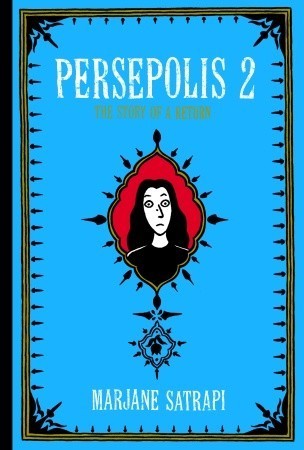 |
| |
Title: Persepolis 2
Series: Persepolis
Author: Marjane Satrapi
Publisher: Pantheon
Publication Date: August 2, 2005
In Persepolis, heralded by the Los Angeles Times as "one of the freshest and most original memoirs of our day," Marjane Satrapi dazzled us with her heartrending memoir-in-comic-strips about growing up in Iran during the Islamic Revolution.
Persepolis 2 is the continuation of her fascinating story. In 1984, Marjane flees fundamentalism and the war with Iraq to begin a new life in Vienna. Once there, she faces the trials of adolescence far from her friends and family, and while she soon carves out a place for herself among a group of fellow outsiders, she continues to struggle for a sense of belonging.
Finding that she misses her home more than she can stand, Marjane returns to Iran after graduation. Her difficult homecoming forces her to confront the changes both she and her country have undergone in her absence and her shame at what she perceives as her failure in Austria. Marjane allows her past to weigh heavily on her until she finds some like-minded friends, falls in love, and begins studying art at a university. However, the repression and state-sanctioned chauvinism eventually lead her to question whether she can have a future in Iran.
As funny and poignant as its predecessor, Persepolis 2 is another clear-eyed and searing condemnation of the human cost of fundamentalism. In its depiction of the struggles of growing up--here compounded by Marjane's status as an outsider both abroad and at home--it is raw, honest, and incredibly illuminating.
Warning: This is a review for the second novel in Marjane Satrapi's Persepolis series. It may contain spoilers for the first book.
My Review
I'll admit that it's been a few years since I've read Persepolis: The Story of a Childhood. Okay... it's been a little over four years, but I remember being completely immersed in the personal story that Satrapi told in Persepolis. Ms. Satrapi's Persepolis 2 does exactly the same thing to readers because the reader does not want to stop reading and finding out more about Marjane's life and the war in Iran. Satrapi has a a talent of combining her personal story with history that keeps readers interested while still informing them of the historical events that took place during her life.
Persepolis 2 is a graphic memoir, which means that the book is told through comic-style images. Just like Satrapi's first book in the series, the events of Persepolis 2 are shown to the reader in black and white drawings. It's a book worth reading through and looking at because Persepolis 2 is a story unlike many others. Satrapi's images are simple, but detailed. It's amazing to read the book, and see the amount of work that Satrapi has put into her novel. Ms. Satrapi also uses different languages during the book (Persian, French, etc.), and that really reflects her disjointed upbringing.
There are many different settings in Persepolis 2. Readers continuing the series will remember that at the conclusion of Persepolis, Marjane was headed to Austria to avoid the war and to get a better education. The second book begins with teenage Marjane living in a convent in Austria while continuing her education. This would be her second of many homes during her stay in Europe. Because of many tragic and life altering events, Marjane bounces around from place to place for a while before a horrific event sends her back to Iran to rediscover herself. Both settings show how Satrapi felt like an outsider. She would never truly belong in Europe because of her Persian heritage, and she would never again belong in Iran after spending time in the Western world.
 |
If you're already a fan of Satrapi's Persepolis: The Story of a Childhood, then you should really read the conclusion, Persepolis 2: The Story of a Return. It's interesting to see Marjane come around full circle, but it's also a book that will help readers understand just how turbulent it is in the Middle East because this is a true story. I'd also recommend this book to readers of Zeina Abirached's I Remember Beirut and fans of memoirs and graphic novels.
Marjane Satrapi was born in 1969 in Rasht, Iran, and now lives in Paris. She is a regular contributor to magazines and newspapers throughout the world, including The New Yorker and The New York Times. She is the author of several children's books and of the critically acclaimed and internationally best-selling memoir Persepolis, which has been translated into twelve languages, was a New York Times Notable Book, won a Harvey Award, and received an Alex Award from the American Library Association.




No comments :
Post a Comment
Note: Only a member of this blog may post a comment.